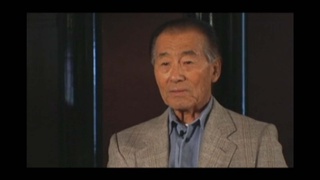Interviews
Japanese newspaper supported by Canadian government during World War II
Eventually, that newspaper continued on during the whole war, because they had to have some method of communicating with the Japanese citizens, and Tom pointed out to the RCMP, he said, "You know, at least fifty percent of the Japanese on the West Coast do not read English. I'd have to write it in Japanese." So they said, "Okay, well, I guess if you have to, go ahead." And then, so then on top of that, he says, "You know, our newspaper system is completely, we can't even do anything with the newspaper because we have no money. Our whole subscription thing is disappeared because of the, because nobody has the money to buy a newspaper anymore. You destroyed their livelihood." So the RCMP says, "Okay, we'll pay you to run the newspaper."
Date: July 25 & 26, 2006
Location: Washington, US
Interviewer: Tom Ikeda
Contributed by: Denshō: The Japanese American Legacy Project.
Explore More Videos

Arrested in camp for trying to leave
(1916-2010) draft resister, helped form the Heart Mountain Fair Play Committee


A visit to Jerome after OCS
(1919 - 2006) World War II and Korean War veteran

Resisting transfer from Jerome
(1919 - 2006) World War II and Korean War veteran

Appearance vs. Combat Effectiveness
(1919 - 2006) World War II and Korean War veteran



People with talent in the 100th infantry battalion
(1919 - 2006) World War II and Korean War veteran




General Ryder’s faith in the 100th infantry battalion
(1919 - 2006) World War II and Korean War veteran

442nd’s contribution to redress
(1919 - 2006) World War II and Korean War veteran


Unable to work when the war broke out
(1913-2013) Doctor specializing in obstetrics in Southern California
